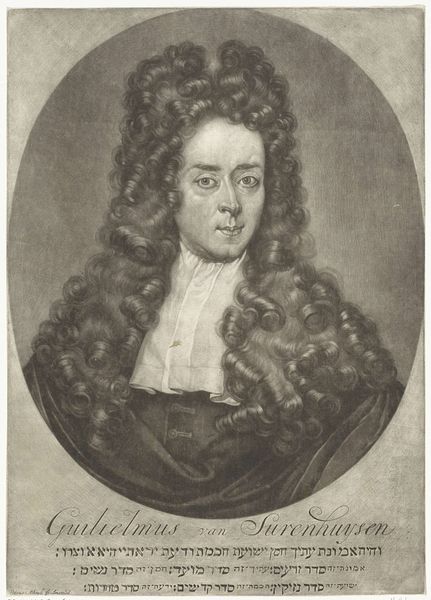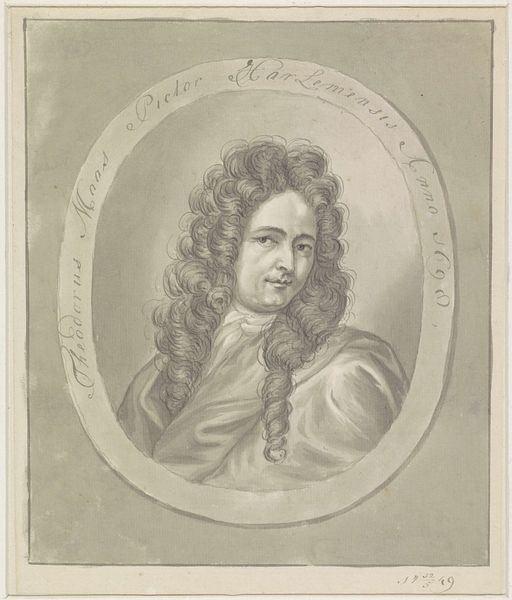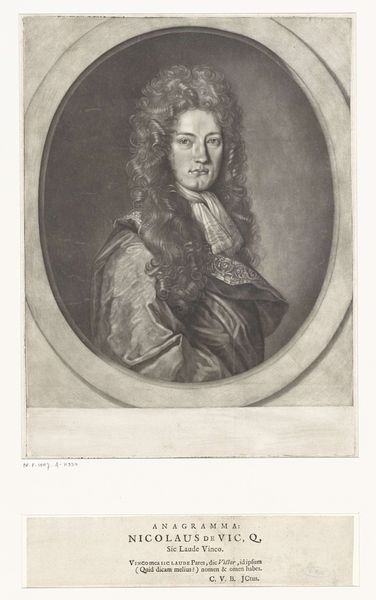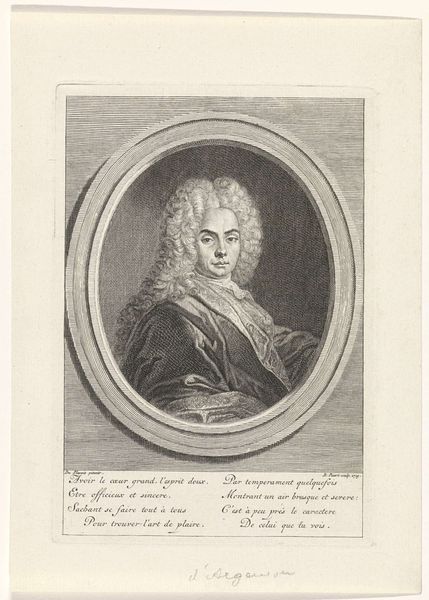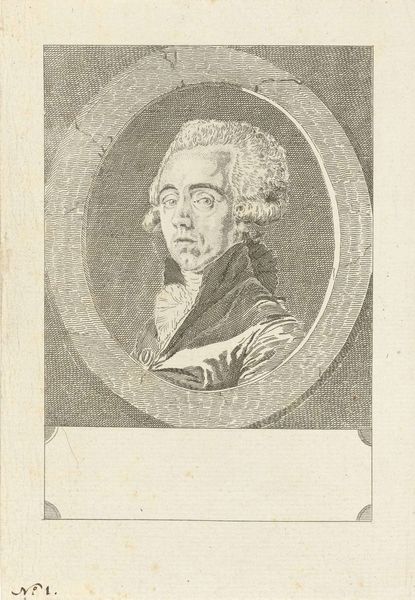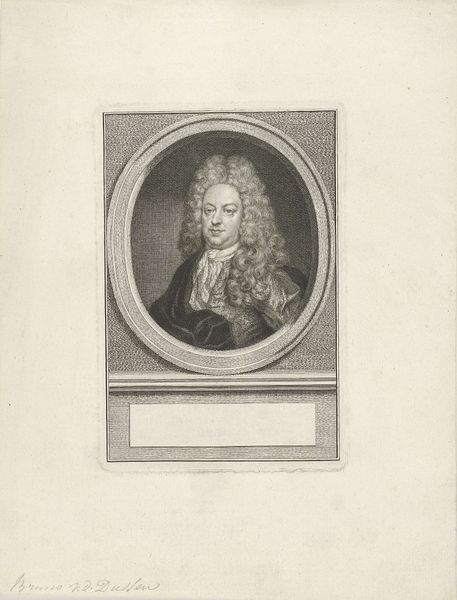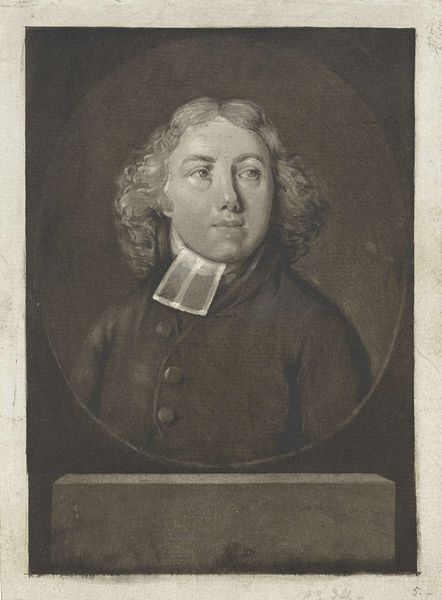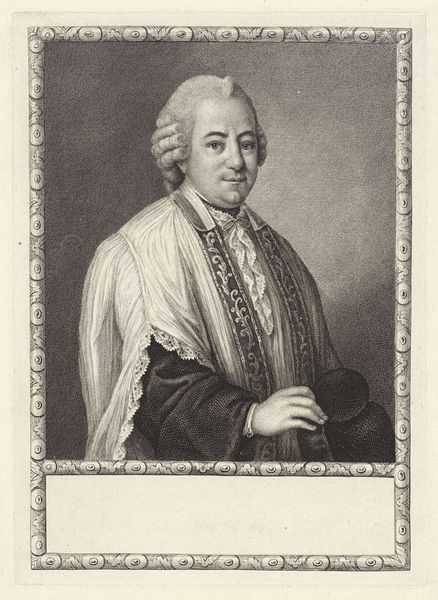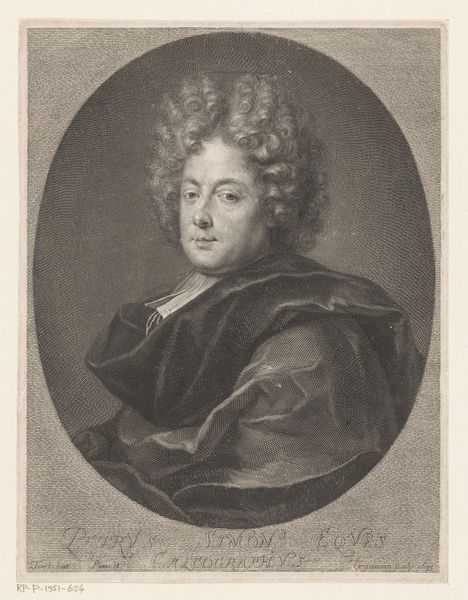
drawing, paper, ink
#
portrait
#
drawing
#
baroque
#
dutch-golden-age
#
paper
#
ink
Dimensions: height 255 mm, width 192 mm
Copyright: Rijks Museum: Open Domain
Godfried Schalcken rendered this sanguine chalk drawing of a man in an oval format sometime between 1643 and 1706. Chalk is a naturally occurring material, easily accessible and relatively inexpensive, making it a popular choice for preliminary sketches and studies. Sanguine chalk, with its warm, reddish-brown hue derived from iron oxide, was favored for its ability to mimic the tones of human flesh. Schalcken masterfully exploits these qualities to create depth and volume in the portrait. Observe how he uses delicate strokes to build up layers of shading, capturing the soft texture of the sitter’s garments and the voluminous wig. The density of the chalk creates a tactile sense of presence, while the looser, sketchier lines in the background suggest a sense of atmosphere. Chalk drawings like these are a reminder that every work of art is deeply intertwined with its materials and methods. By appreciating the role of humble materials, we can gain a fuller understanding of the creative choices and skilled traditions embedded within.
Comments
No comments
Be the first to comment and join the conversation on the ultimate creative platform.
